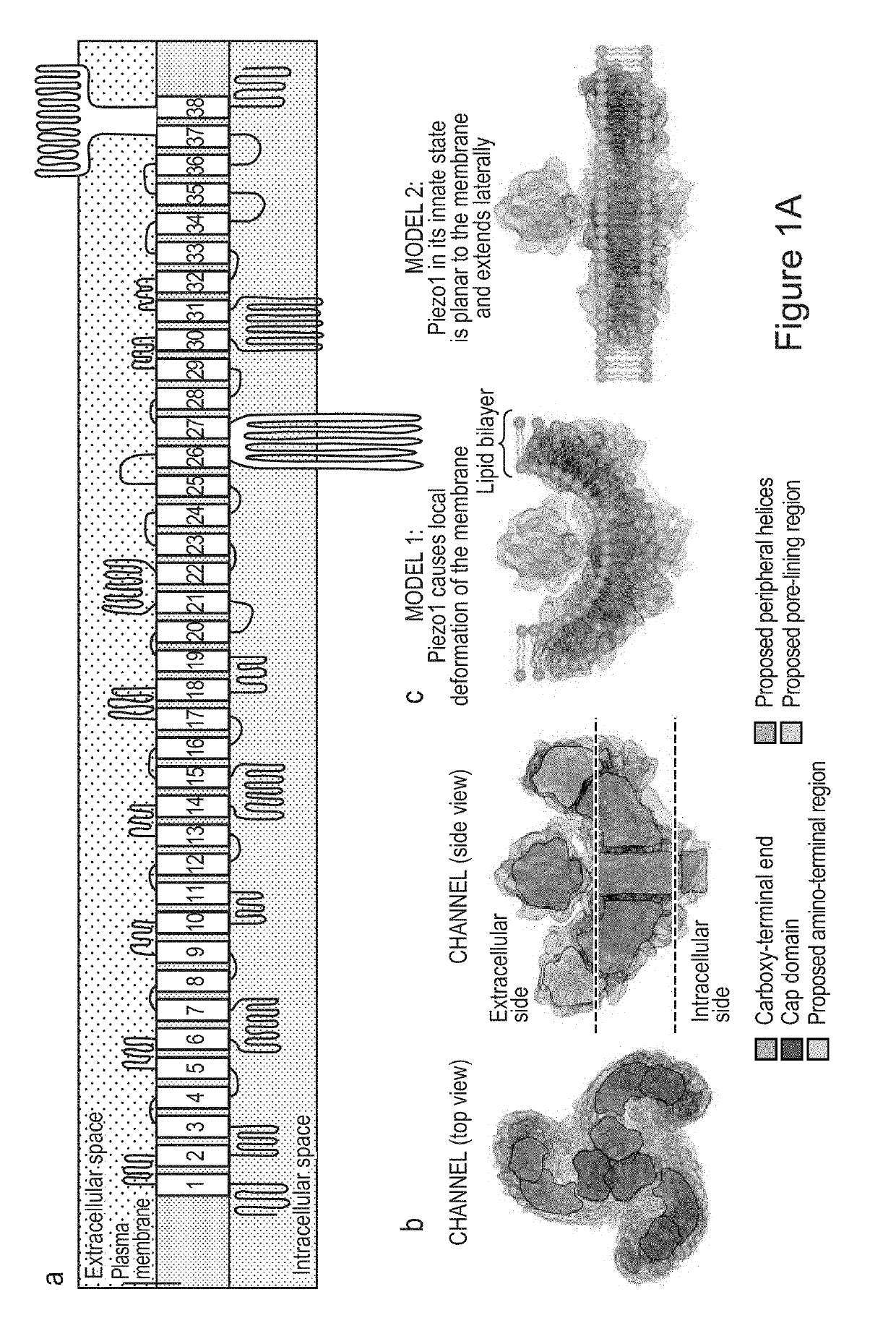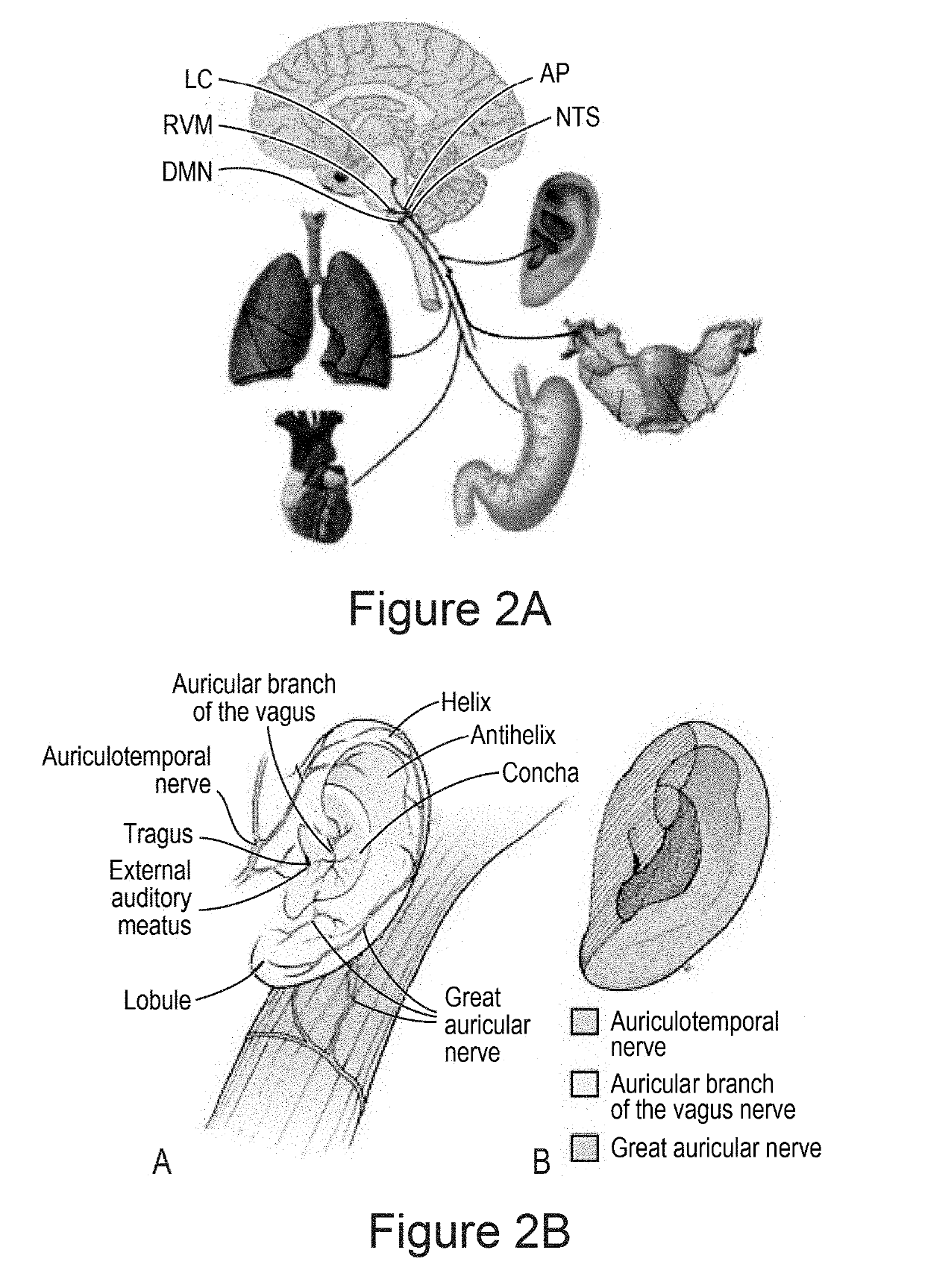Devices and methods for delivering mechanical stimulation to nerve, mechanoreceptor, and cell targets
a mechanical stimulation and cell target technology, applied in physical therapy, medical science, therapy, etc., can solve the problems of unpleasant and/or dangerous side effects of patients subjected to electrical stimulation, particularly problematic side effects, etc., to reduce stress induced ringing in ears, and reduce stress induced ringing
- Summary
- Abstract
- Description
- Claims
- Application Information
AI Technical Summary
Benefits of technology
Problems solved by technology
Method used
Image
Examples
example 1
I. EXAMPLE 1
IRB Approved Randomized and Placebo Controlled Study
[0616]Example 1 is a protocol for an IRB-approved, randomized and placebo-controlled study for testing the devices and waveforms (e.g., the transformed time-varying waveform) described herein. In particular, the study tested the whether the devices and waveforms are safe for both episodic and daily use over three weeks. Results and benefits of mechanical nerve stimulation were reported from users and study coordinators and gathered in surveys. Case reports from the study of Example 1 are described in Example 2.
[0617]Research participants were subjected to mechanical stimulation comprising acoustic noise, with amplitudes at levels of tactile vibration. Waveforms applied comprised stochastic resonance signals including random noise of various frequencies, standard and modified sine waves, incidentally transformed waves, and multi-scalar modulation of carrier waves.
[0618]Devices were placed on locations on the subjects, su...
example 2
J. EXAMPLE 2
Case Reports from IRB Study of Example 1
[0684]Example 2 summarizes case reports from the IRB study of Example 1.
[0685]Modulation and practices associated with peripheral nerves and specific neural circuits can produce changes in subjective assessment of mood, which may correlate with enhanced vagal tone (VT) and can be understood as related to improved interoception. Short-term modulation of the cranial nerves with representative waveforms with transducers place on the anatomy in the vicinity of cranial and other peripheral nerves has produced a variety of effects in a general sample of the population. The following case reports have been received:
[0686]Alterations in conditions and symptoms that were noted using the present device and methods include: deeper and accelerated relaxation (via improved vagal tone as demonstrated in heart rate variability and mean arterial pressure; improved Alpha wave activity via electroencephalography); improved quality and length of slee...
example 3
K. EXAMPLE 3
EEG Measurement of Waveform Effects
[0691]Example 3 is an example showing differences in neural activity resulting from different waveforms, as measured via quantitative EEG (qEEG). The results of Example 3 show improved performance via the use of transformed time varying waves as described herein.
[0692]In Example 3, 3 subjects, older than 18 years old were studied. Two subjects were female. Subjects were assessed as follows:[0693]3 minutes of EEG recording at rest in eyes closed (EC) condition[0694]20 minutes of stimulation with simultaneous EEG EC recording (only 2 subjects)[0695]3 minutes post intervention EEG EC recording
[0696]EEG recording and data processing was as follows. A 32-channel pre-amplified EEG device was used for data acquisition. Data was sampled at a rate of 500 Hz, amplified and filtered using a bandpass of 0.1-45 Hz. EEG was recorded for a total of 9 min per procedure (baseline, intervention, post-intervention). For offline analysis a low-pass cut fil...
PUM
 Login to View More
Login to View More Abstract
Description
Claims
Application Information
 Login to View More
Login to View More - R&D
- Intellectual Property
- Life Sciences
- Materials
- Tech Scout
- Unparalleled Data Quality
- Higher Quality Content
- 60% Fewer Hallucinations
Browse by: Latest US Patents, China's latest patents, Technical Efficacy Thesaurus, Application Domain, Technology Topic, Popular Technical Reports.
© 2025 PatSnap. All rights reserved.Legal|Privacy policy|Modern Slavery Act Transparency Statement|Sitemap|About US| Contact US: help@patsnap.com



